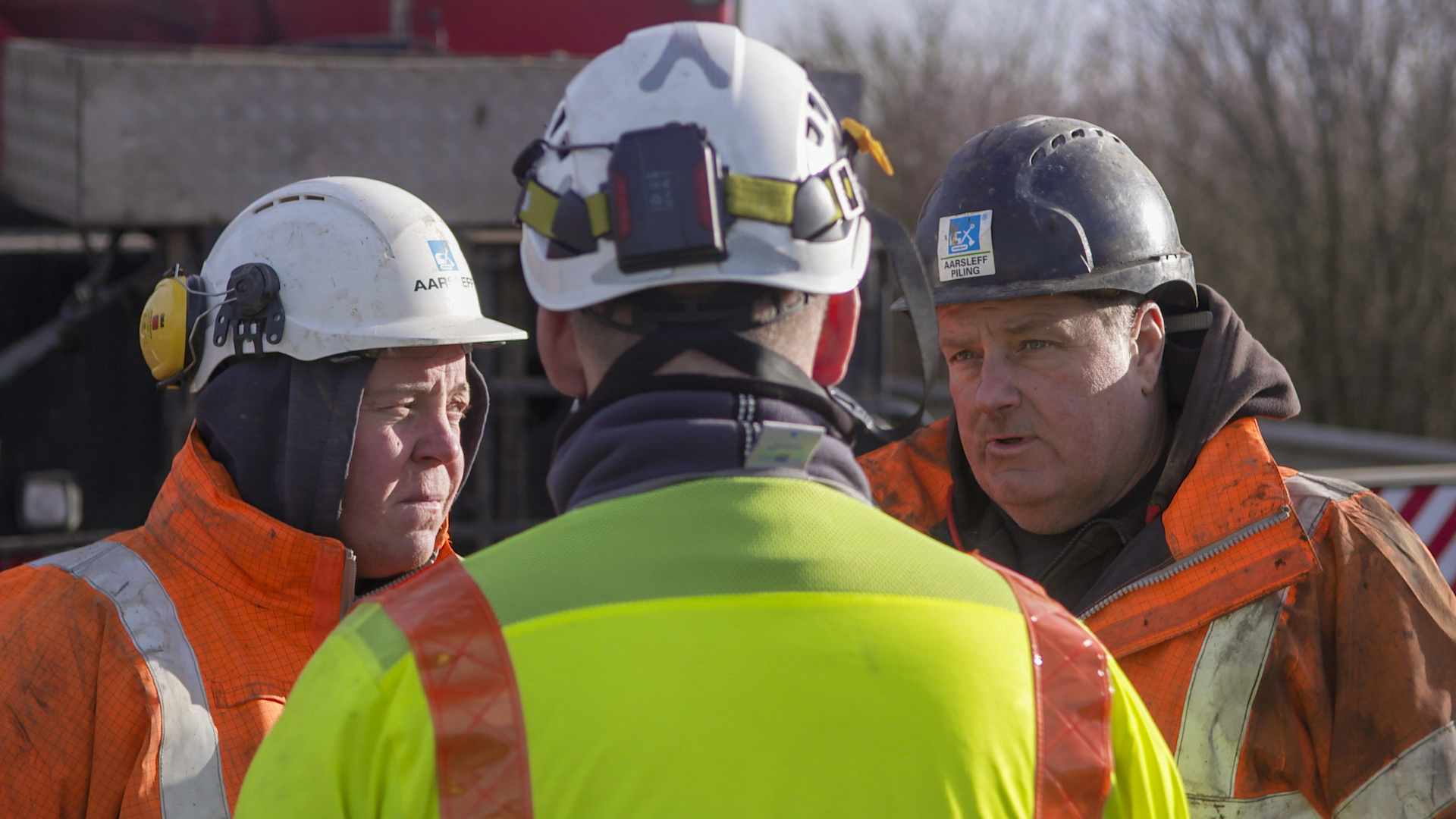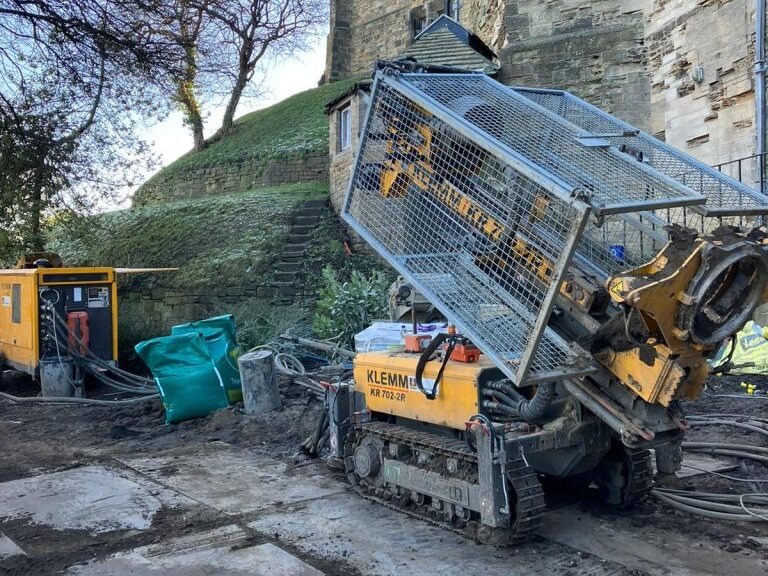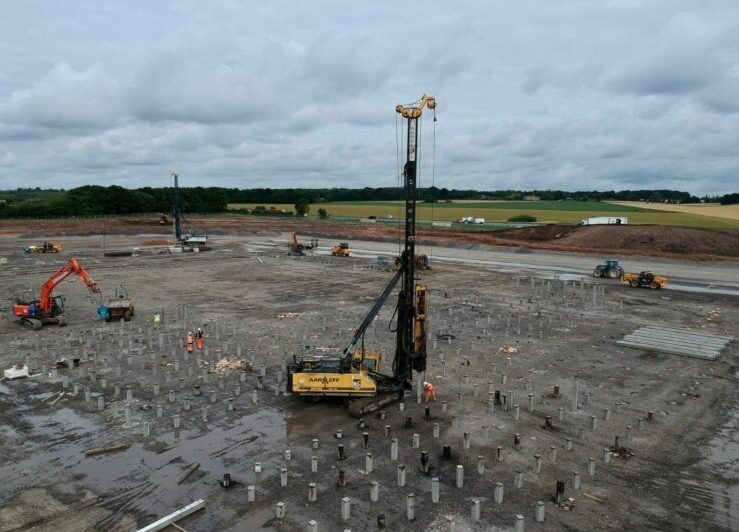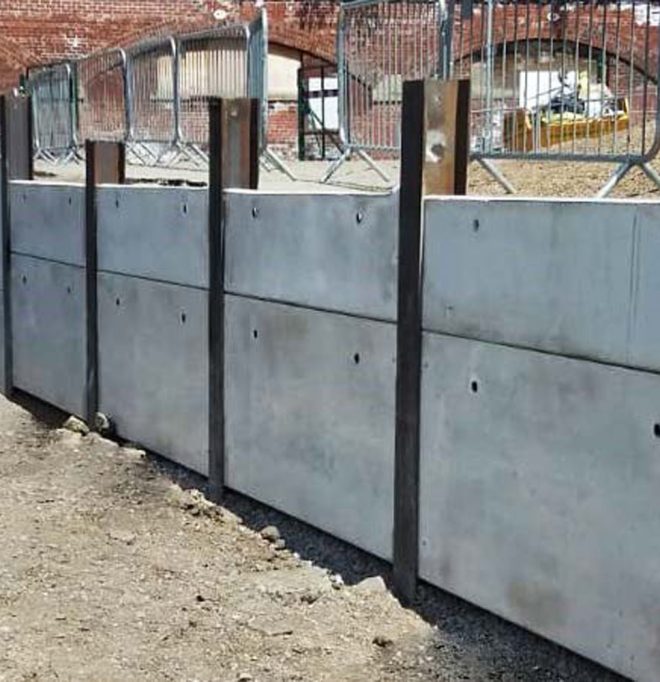Trusted Bored Piling Contractors
Bored piling is one of the most effective foundation solutions for transferring heavy loads to deeper, more stable soil layers. At Aarsleff, a subsidiary of Per Aarsleff A/S, we pride ourselves on being one of the UK’s most trusted bored piling contractors.
With over 30 years of experience, choosing Aarsleff as your bored piling contractor means a bespoke value-engineered design and installation solution for a wide range of schemes. Our extensive range of rigs, machinery and equipment allows us to install and build tighter vertical bored pile walls to your desired specifications.

What Sectors Do We Work In?
We have completed piling projects in various sectors including:
Whether you need piling work for residential, commercial, or infrastructure projects, we offer a complete service backed by unparalleled technical knowledge and exceptional project execution.
Highly Skilled & Experienced Team
At the heart of our success is our highly skilled and experienced team of engineers, project managers, and technical specialists. Our team’s dedication to excellence allows us to tackle projects of any complexity, from small-scale residential developments to large-scale infrastructure initiatives.
Our engineers bring extensive knowledge of ground conditions and cutting-edge piling techniques. We stay ahead of the curve with continuous professional development, ensuring we are up to date with the latest advancements in geotechnical engineering. Collaboration is key to our approach. We work closely with clients, architects and contractors to deliver efficient and cost-effective bored piling solutions that meet your unique project requirements.

Advanced Piling Rigs
We invest in advanced piling machinery to ensure precision and reliability in every project we undertake. Our fleet includes large excavators and bored piling rigs, which are capable of drilling piles to significant depths and diameters, even in challenging ground conditions. Our machinery is meticulously maintained to reduce downtime and enhance productivity, allowing us to meet tight project deadlines.
Wide Range of Drilling Equipment
Alongside our fleet of rigs, we have access to a wide range of drilling equipment including telescopic Kelly bars. We utilise drilling equipment to create piles in confined spaces or urban areas while maintaining high safety and environmental standards. Whether you require bored piles for high-rise buildings, bridges, or retaining walls, our drilling equipment ensures maximum efficiency and minimal disruption to surrounding areas.

Our Commitment to Sustainability
At Aarsleff, sustainability is at the core of our operations. We’re committed to minimising our environmental impact while delivering bored piling solutions that stand the test of time. We carefully assess each project’s environmental impact and implement measures to protect the environment wherever possible. For example, we often reuse or recycle waste materials.










